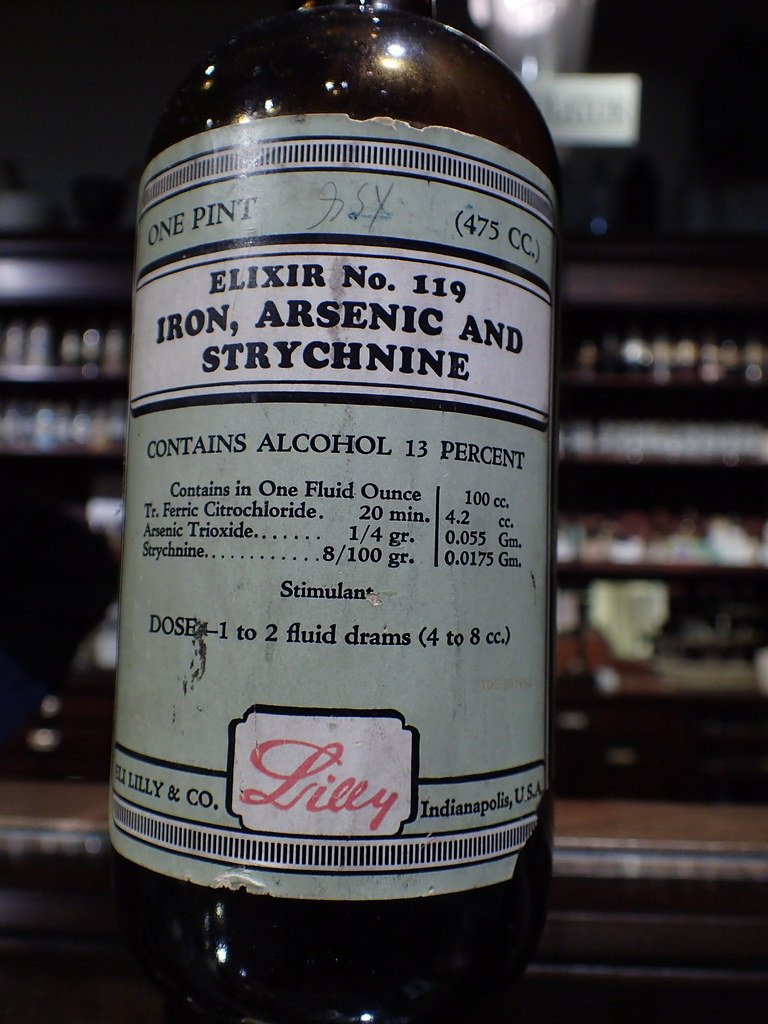Arsenic; From Household Item and Poison to Medicinal Marvel
If there's a lesson gleaned from Agatha Christie novels, it's the unsettling ease with which arsenic can transition from a household item to a lethal poison. Odorless, tasteless, and discreetly dissolvable, arsenic has a notorious reputation, yet it has a complex history that extends beyond its sinister associations.
In the 1800s, Arsenic was a common substance that was an household item and people wouldn't see anything awkward about buying it until in the 1830s where it was discovered in post-mortem study. We could say that for the most of the 19th century arsenic was not regulated. Although it has a very potent poison, it has been very helpful in the world of medicine from being a leukemia drug and was even one of the earliest effective antibiotics for syphilis.
Arsenic is a naturally occurring element, found in the earth's crust and it is usually combined with sulfur or oxygen but the one we are familiar with are in the form of arsenates or arsenites (such as the poisonous Arsenic trioxide or white arsenic). It isn't like arsenic is only poisonous, history shows that Hippocrates used arsenic paste to heal abscesses and ulcers.
While not in its pure form, chemists in the 13th century successfully isolated elemental arsenic, opening doors to extensive experimentation. During antiquity, arsenic's poisonous attributes were evident, exploited by families like the Borgias and the Medicis for nefarious purposes. There are even historical accounts of arsenic being employed in an attempt on Napoleon's life, earning it the morbid moniker, "inheritance powder."
Symptoms of Arsenic poisoning was similar to other types of illness as it comes with symptoms like nausea, vomiting, stomach pain, and diarrhea which are common symptoms for Cholera or Pneumonia. Arsenate are less toxic but deadly as they substitute for the phosphate in ATP causing cell death and organ death. Arsenites, similar to arsenic trioxide kills by messing up enzymes in the body as they bond to the sulfur in those chemical. This can lead to cell death or cause cancer in humans.
With arsenic being a poison and its popularity increase, chemist and pharmacists began to research the medicinal properties of arsenic more intensely. In the 1780s, Thomas Fowler created fowler's solution, a medicine for treating malaria back then. The content consist 1% potassium arsenic trioxide and was mixed with wine and liquor, and while it treated malaria, it was said to have treated fevers, anxiety, high blood pressure, ulcers, heartburns, tuberculosis, asthma, headaches, and even skin conditions like eczema, psoriasis, dermatitis and so on. It was the best treatment for leukemia until chemotherapy and radiotherapy came into existence in the 20th century.
While arsenic had its popularity, it gained its biggest attraction in 1800s when it was used to treat syphilis. Caused by Treponema pallidum, and transmitted through sexual intercourse, syphilis was before then treated with mercury. Scientist were using Atoxyl which is a weakened form of arsenic to treat trypanosomiasis (sleeping sickness). To improve the use of Atoxyl and reduce the risk of poisoning from arsenic, they were able to tweak Atoxyl to get Arsphenamine or what they referred to as compound 606 and wanted to use this to treat syphilis and there came Salvarsan which was a standard medicine to treat syphilis but then it had its drawback such as reacting easily with oxygen and it was not effective against treating neurosyphilis.
While Arsenic was important in treating syphilis, it was replaced by penicillin and other antibiotics in the 1930s but before antibiotics, arsenic was effective in treating certain illnesses even when it is a known poison.
Read More
https://www.cancer.gov/about-cancer/causes-prevention/risk/substances/arsenic
https://sciencehistory.org/stories/magazine/an-everyday-poison/
https://www.ncbi.nlm.nih.gov/pmc/articles/PMC3179678/
https://www.amnh.org/explore/news-blogs/on-exhibit-posts/was-napoleon-poisoned
https://pubmed.ncbi.nlm.nih.gov/27784519/
https://www.ncbi.nlm.nih.gov/pmc/articles/PMC8860286/
https://cfpub.epa.gov/si/si_public_record_report.cfm
https://jmvh.org/article/arsenic-the-poison-of-kings-and-the-saviour-of-syphilis/
https://www.ncbi.nlm.nih.gov/pmc/articles/PMC6478456/
https://sti.bmj.com/content/91/1/69
https://www.ncbi.nlm.nih.gov/pmc/articles/PMC2726818/


I know arsenic as a poison, infact, I do not think I have ever thought it had a medical impact in the past or at any point in time.
Right!! Appreciate your contribution.
Thanks for your contribution to the STEMsocial community. Feel free to join us on discord to get to know the rest of us!
Please consider delegating to the @stemsocial account (85% of the curation rewards are returned).
Thanks for including @stemsocial as a beneficiary, which gives you stronger support.
In Esperanza a city that is near from my city, almost 40km, a few years ago the cows of a farmer died in one day without visible wounds but with the investigation from the vet of the vet college situated in that city they found that the undergrounf water for the animals was contaminated with arsenic made it by the dairy companies Milkaut.
Can you imagine such sad occurrence, thanks for sharing this with us.